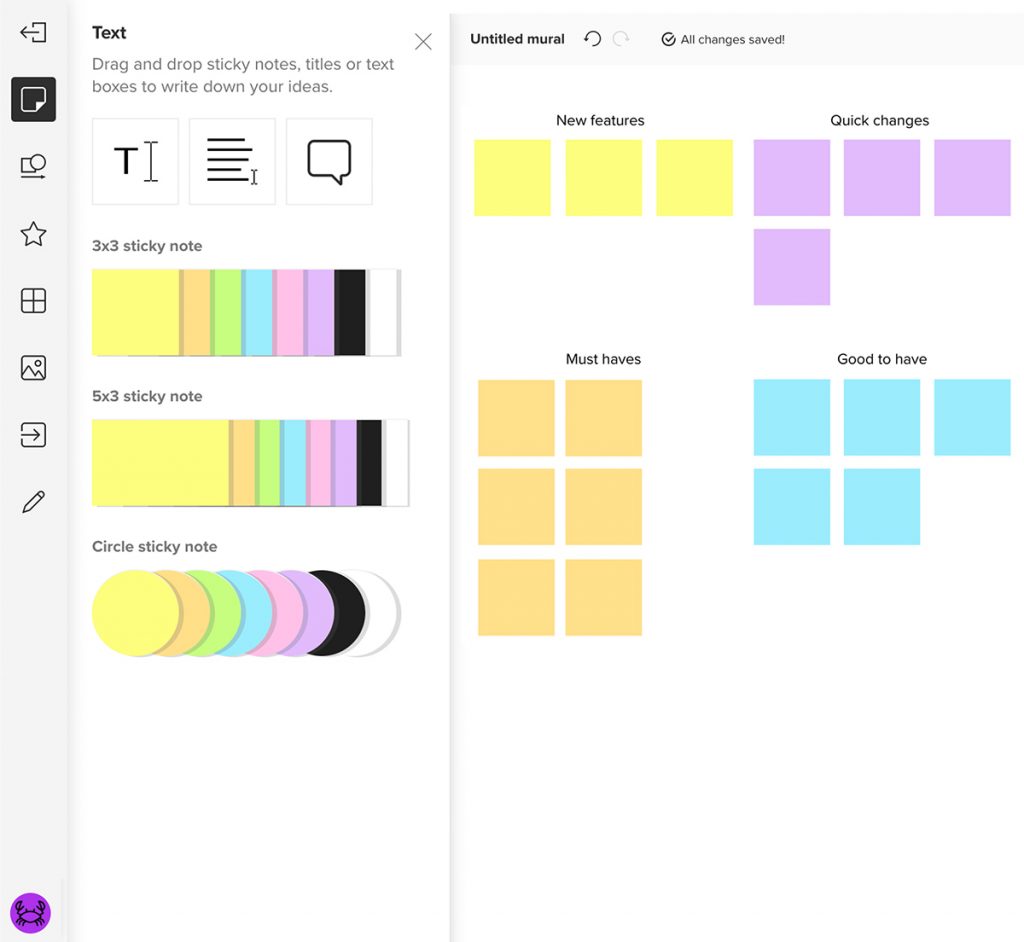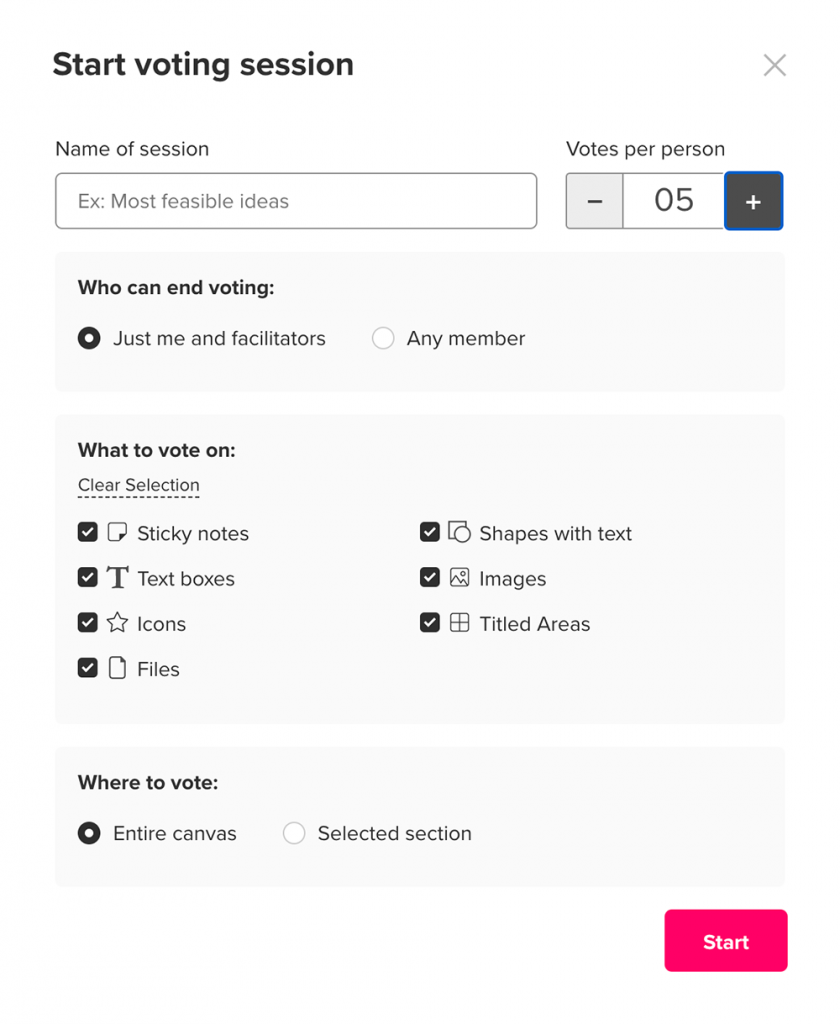Running a brainstorm is a great way to explore new ideas. As an individual contributor, you’ve probably participated in a few, or maybe you’ve even led your own as a new manager. You get into a room with your team, throw ideas at the wall, and see what sticks.
Leaders at all levels use this strategy to promote innovation. But over the past two years, as work has moved remote, many managers have tried to replicate this in-person experience virtually, using traditional brainstorming methods despite a lack of evidence that they produce valuable results.
The question has now become: Is there a better way to brainstorm effectively while working in a remote or hybrid environment?
Luckily, the answers is “yes.” Extensive research shows that, when it comes to innovation, hybrid and remote teams can outcompete in-person teams by adopting best practices around digital communication and collaboration. But sadly, in my experience, both novel and seasoned leaders struggle to adapt due to judgment errors, or cognitive biases, that lead them to reject new practices in favor of more familiar ones.
If you are a leader in our shifting world of work, don’t let yourself fall into this trap. It’s time to admit that traditional brainstorming sessions need a serious overhaul. Let’s start by taking a look at what’s not working and why.
The Problem with Traditional Brainstorming
In-person, synchronous brainstorming is a widely accepted approach to innovation. It involves groups of four to eight people gathering in a room to come up with new solutions to a pre-selected problem. Research in behavioral science classifies the benefits of brainstorming in two ways:
Synergy: Ideas shared by one person can energize, inspire, and trigger ideas in other people.
Social facilitation: Collaborating to reach a common goal can motivate everyone in the group.
These benefits, however, also come with some downsides. A major one is production blocking, a term used to describe a situation when someone has an innovative idea that gets lost in the mix because the larger group is focused on a different topic. This scenario may sound familiar to introverts. People who are introverted tend to think better in quiet environments, alone or with one other person. It can be challenging for them to interrupt an ongoing discussion and have their ideas heard.
Those who default to pessimism over optimism may similarly struggle here. Optimists tend to process verbally, spit-balling half-baked ideas on the fly with ease. Pessimists, by contrast, usually process internally. Before sharing an idea, they may feel the need to think it through and evaluate it for flaws.
Pessimists, along with junior employees, may be powerfully impacted by evaluation apprehension, or a fear of openly sharing ideas due to social anxiety about what their peers will think. Despite instructions to share “off-the-wall” ideas during brainstorm sessions, many people don’t want to be perceived as out of line, and we all know how difficult it can be to overcome our natural tendencies.
As a result, numerous studies show that while traditional brainstorming is a great tool for building team alignment and collaboration, it’s much less successful for generating innovation. Worse, when we try to recreate a traditional brainstorming session in the virtual realm, we lose all the positive energy and benefits of being in-person, and keep all the cons.
Make Way for Virtual Brainstorming
If you’re feeling discouraged by the research — don’t be. Behavioral economics and research in psychology have an equally encouraging solution: virtual brainstorming.
One study comparing virtual and in-person brainstorming groups found that in-person groups enjoyed the process of brainstorming more and had more fun doing it. However, the study found that virtual groups ultimately generated more ideas, which is, of course, the ultimate goal of brainstorming. Other research reiterates this finding, stating that the larger the in-person group, the fewer novel ideas per person, whereas the opposite is true for virtual brainstorming. The same research finds that virtual environments provide a better experience for group members as a whole, balancing the preferences of introverts and extroverts, optimists and pessimists, and lower- and higher-status members.
In summary, virtual brainstorming is better for innovation — and for people.
How to Run a Great (Virtual) Brainstorming Session
This all may sound well and good, but to really champion the cause, you’ll need to prove that it generates results, meaning you will need to lead a successful virtual brainstorming session. Keep in mind that virtual brainstorming can be carried out with remote, hybrid, or even in-person teams. It just requires everyone to “not” be in the same room.
Step 1: Pick a shared collaboration tool that works for your team.
Google Forms and MURAL are two useful collaboration tools that facilitate anonymous idea sharing and have a basic “free” option. Google Forms is more useful for text-based idea brainstorming. You don’t need to sign into Google Forms to submit an idea, so contributions are automatically anonymous. MURAL is a virtual whiteboard tool, which works better for sharing ideas that have more of a visual component. To facilitate anonymity on MURAL, each participant can create a throwaway account or choose an alias when signing into the session.
To begin, everyone in the meeting will need to log into a videoconferencing tool to discuss their ideas. For this to work in real-time, members should sign in virtually even if the meeting is in-person. If you are working on a team across multiple time zones, however, you can ask each participant to add their ideas to your chosen platform asynchronously by a certain deadline.
The brainstorming session could last anywhere from 30 to 60 minutes, depending on the size and complexity of the question you’re trying to answer.
Step 2: Generate and organize ideas.
Make sure to send out the agenda in advance, and if possible, ask participants to do some independent thinking beforehand. This will save you some time during the actual brainstorming session.
If you are running the meeting in real time, begin the brainstorming by giving all team members 10 to 15 minutes to add their ideas independently to your collaboration tool. Ask people to contribute any ideas they brainstormed ahead of time, as well as generate new ones. MURAL and Google Forms both have many options for how your whiteboard can look – from mind maps to flowcharts to blank boards with sticky notes. I recommend you explore the various options each platform offers and choose a design that fits the topic of your session.
For instance, here is an example of how you might set up a MURAL board for a brainstorming session around how to revamp your website.

If you are running the brainstorm asynchronously, ask team members to submit their ideas by an assigned deadline.
Either way, encourage your group to focus on quality over quantity, and encourage them to submit contradicting ideas if they feel inspired to do so — without worrying about the consequences. (Remind them that everything is anonymous, after all.) Research has found that by embracing and being energized by tension, such as generating ideas that serve opposing goals, facilitates innovation.
As the facilitator, let your team know that you will be checking on the board as they brainstorm to remove duplicate ideas and group together similar ideas into broader categories. This helps organize the board and make it more visually digestible. But be careful to not remove any substantive ideas.
Step 3: Evaluate.
Once the idea generation ends, and the board is cleaned up, it’s time for step two. If your meeting is in real time, dedicate the next five to 10 minutes to an anonymous feedback session in which team members can comment on, rate, or vote for their favorite contributions. (See an example of a voting session in MURAL below.)

It can be helpful to give people a criteria to think about when assessing their team member’s ideas. For instance, you could ask your team to assess at least three categories on a scale of 1–10: the idea’s novelty, practicality, and usefulness. Additional ratings can depend on the specific context of the brainstorming topic.
Keep in mind that this may be done asynchronously as well. If this is the case, follow the steps above and ask each participant to give their feedback by a second defined deadline. Both Google Forms and Mural allow you to vote/poll.
Once you have their responses, if you feel the ideas weren’t strong enough or that you need more, the team members can do another idea-sharing session, reevaluate old ideas or generate new ones based on what you see and hear.
Step 4: Meet to discuss shortlisted ideas.
For remote teams, the last step may be done in real-time on a video call. For teams working across time zones, this may be done in a separate virtual meeting when the majority of people can sign in and discuss.
For hybrid teams, you may get the most bang for your buck by conducting steps one through three virtually to prevent production blocking and evaluation apprehension, and by meeting in the office for this last step. It can be a challenging to discuss the feedback and decide which ideas to finalize. If you have the option, then, meeting in person may help minimize misunderstandings.
When facilitating the conversation, encourage people to distance themselves from their ideas to minimize personalities and politics getting in the way. Instead, focus on the stated goals of the problem you’re trying to solve. Use the anonymous evaluations to ensure that the best ideas float to the top. Then, measure the ideas against the stated goals and flesh out the ideas that offer the most promise. Decide on the next steps for implementation and assign the next steps to team members.
Leaders who want to gain an innovation advantage in the future of work need to avoid sticking to pre-pandemic innovation methods. Millennial leaders can change that by using research-based best practices like virtual asynchronous brainstorming to boost innovation in hybrid and remote teams, and use the results to convince senior leaders to adopt such practices. By getting both more ideas and more novel ideas, you will build support and credibility form top leadership for your suggestions, help them see the advantages of using innovative methods that work today, as well as help yourself advance in your career.
This article has also been published in the Harvard Business Review https://hbr.org/2022/02/why-virtual-brainstorming-is-better-for-innovation
By Dr. Gleb Tsipursky is a world-renowned thought leader in future-proofing, decision making, and cognitive bias risk management. (Consultant with IndusGuru Network Partners)
Disclaimer: The opinions expressed in this column are that of the writer. The facts and opinions expressed here do not reflect the views of IndusGuru Network Partners
#innovation #hybridteams #remoteteams #cognitivebiasriskmanagement #virtualbrainstorming
